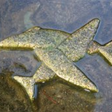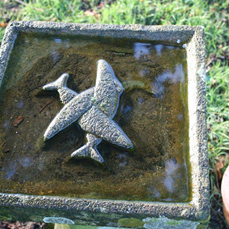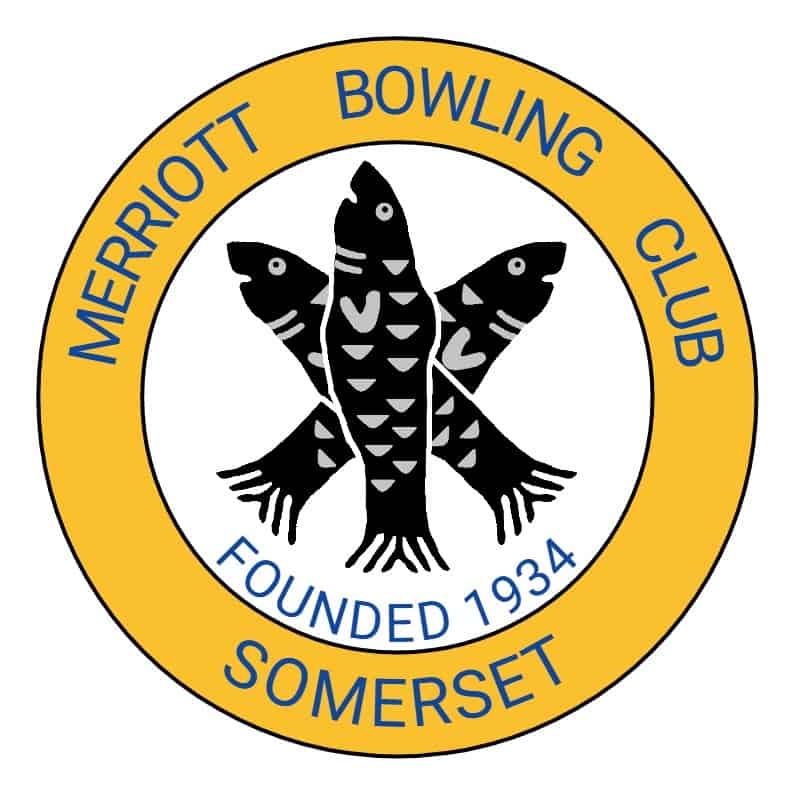The Early History of Merriott Bowling Club
Following the First World War the Merriott War Memorial Committee was formed and in addition to looking after the war memorial they decided to establish a recreation field as a lasting memorial to those who had died during the war. The committee was chaired by Reverend Percival who also chaired the Parish Council. In order to do this they bought a field for £400 which proved to be unsuitable. In 1924 Robert Blake of Marks Barn purchased part of a close of land, called Newchester Cross from Henry Parker, a butcher in Broadway, Merriott, for £700 and offered it for £400 to the Parish Council of Merriott for the purposes of a public pleasure and recreation ground. The offer was gratefully accepted and the money raised by selling the unsatisfactory field for £400.
Between 1924 and 1939 the field was developed, so far as the resources of the village allowed and by 1939 there was a children’s playground with swings and a sand pit situated close to the road and occupying land now partly occupied by the bowling green, a football ground, possibly a cricket pitch and tennis courts (some doubt about these), a small bowling green (the bowling club was formed in 1934 with the Reverend Percival as President and A C Tett as captain) and a small sports pavilion (open fronted with seats at the rear and a fence at the front, painted green, positioned alongside hedge to the left of the entrance gate). In the County Mail 0f Wednesday July 29th 1936 there is a report on Merriott Carnival. The Vicar, Rev. S Percival declared the proceedings open and declared that the carnival and fete was in aid of the funds of the Bowling Club, The Hall funds and the Women’s Institute. He stated that the Bowling Club had made a promising opening and he understood that the game was popular amongst the younger parishioners , and not entirely left to the “old fogies.”
In 1939 the field was requisitioned by the military and during the course of the occupation fences were broken, gates destroyed, drainage impaired, the pavilion demolished and all facilities for recreation, including the bowling green, obliterated. Five Nissen huts plus a small cookhouse and stores were erected. The cookhouse and stores occupied an area just behind the Memorial hall, now the car park, and after the war were used as changing facilities by football teams. The Nissen huts were beyond the cookhouse/stores, backing onto the hedge and projecting out into the field. Each hut housed around 40 men in bunk beds. Tents were erected on the field and these they were later occupied by
American troops and then by Italian prisoners of war. (The huts were first occupied by British troops,(RAMC), then Americans prior to D-day who also erected a few rows of bell tents well down in the field, not near the roadway. The tents were removed when the Americans left. The Italian prisoners came next, with the freedom to walk around the village if they wanted to. Then came the German prisoners, fewer of them and conditions stricter.
In December 1946 the field was returned to the Parish Council and in January 1947 compensation of £957 was paid. During 1947 the bowling club reformed with Russell Webb as president and A C Tett as captain. The bowling green was re-laid with club members maintaining and developing the facility. Cyril Tett and Sam Burgess were the main two people involved in re-establishing the bowls club and they built the bowls pavilion. The pavilion had very basic, bench seats around the sides and lockers in which were stored sets of woods and slip-on over shoes. No electricity or water. Visiting teams (very few) were entertained to tea in the committee room of the Memorial Hall. Sam was the mainstay, not only being the groundsman but also running the club for most of the 1950s. He held the club together and was constantly trying to recruit new members. It was a very informal business back then, no whites,no blazers, no ties. Members played in their everyday clothes. Few people had their own woods (bowls) but the club had sets for anyone to use. The club were interested in attracting lady members as well as men. An advert in the County Mail of May 19th 1949 states that “all ladies wishing to play on the green would have every consideration.”
The compensation proved inadequate and by 1959 only the bowls club, the football pitch and the children’s playground had been re-established. The maintenance of the field and the bowls club were dependent upon voluntary work by the bowls club and the Parish Council. According to a letter in 1964 from the Parish Council to the Ministry of Housing and Local Government, the field was maintained as a semi-agricultural plot with the bulk of the grass cutting being achieved by a flock of sheep.
In 1964, due to public outcry over the unsatisfactory state of the field, the Parish Council took over the field in its entirety and appointed a full time grounds man who was paid from rates. Work on restoring the tennis courts also started. In 1973 the bowls club was granted a lease and have managed and developed the club premises ever since.

Novices Cup
Russell Webb, David Gibbs, Clifford Foote , Vick Hooper, Florrie Gibbs , Hilda Gibbs, The President Mr Clifton, Leonard Staples and Sam Burgess.

Novice Cup Winner Clifford Foote and runner-up David Gibbs

Cyril Tett and Sam Burgess builders of the first Pavilion
A question often asked by visitors to the club is –
‘why are there three fishes on your badge’?. Following exhaustive investigations (and ending up several blind alleys) the bottom line would appear to be :-
1) Three fishes do not appear in Merriott Church windows.
2) The bowls club – although founded in 1934 did not have a badge until around 1963.
Cyril Tett, a stalwart of the club in those times, was employed at Nut Tree Farm in Lower Street for the Brake family and used to fish in their pond. Seeing the three fishes on their birdbath seemed ideal for his bowls club’s logo. The Brake family were extremely religious and the three fishes seem to have been based on the Holy Trinity. Did you realise we were such a Holy institution!
pics attached.
Jean & Dave Crisp


The New Club House was officially opened August 31st 2009
An email received from David Gibbs December 2016
Hello Ryan,
I came across your excellent website the other day. It’s good to see the club where I first tried my hand at bowls is flourishing and I wish you well.
I was particularly interested in your History page. I recognise some of my own words embedded in the main article, information I probably gave to the late Kathy Herriman some years ago when she was involved with a history group. (I ran a website for the group for a few years but stopped doing so as interest waned. After I closed the site I converted all the information published into approximately 120 pdf files and sent a copy of the archive to the Heritage Centre in Crewkerne, so the documents are there for future use should anyone be interested.)
However, my main reason for contacting you is to point out an error in the ‘amended’ caption of the photograph of the Novices’ Cup presentation. The person receiving the cup is not my late brother, Jack Gibbs, but the competition winner Clifford Foote who lived up Sandy Hole. Clifford beat me by a narrow margin, at least I like to think it was narrow, but very conveniently I can’t recall the score. You will see I had a fair bit of family support, my sister Florrie, my mother, and my nephew Christopher Durant. Sam Burgess, also in the photograph, was our long-time neighbour and was very much a man of the community during the war years and just after, being involved in various organisations such as the football club, British Legion, and so on, and as you know your present day bowling club owes much to his endeavours. It was on his insistence that I and a number of my contemporaries gave the game a try. I am the only person in the photograph who is still living, even my nephew Chris who was a baby at the time is no longer with us. Here’s another photo taken that day you may find of interest.See above
Does that cup still exist, I wonder?
As you will also know, the other stalwart of the early post-war bowling club was Cyril Tett. Both Sam and Cyril were strong personalities and they often used to fall out for a few weeks before they would be back working together again. Cyril’s mother and my mother were cousins, their family hailing from Hewish, West Crewkerne. Cyril was a bachelor and lived with his mother in a cottage out Beadon Lane; when Cyril’s mother passed away, he lived on in the cottage on his own and he was still there when I left home for pastures new. Since Cyril was absent when the presentation photo was taken, I rather expect he wasn’t on speaking terms with Sam at that particular time!
Membership of the club back then was very small, something like 20 or so people, all male of course. I recall attending an AGM held in the committee room of the Blake Memorial Hall, the first formal meeting of any sort I ever attended. Russell Webb was in the Chair, Sam was Hon Secretary. The small room was far from crowded.
Matches against other clubs were few and far between; I guess the travelling had something to do with that as very few people had cars. I recall playing in three matches, two away and one at home. The away matches were against Crewkerne Bowls Club, West Street and at Bower Hinton. The Crewkerne club was well established with good facilities; the Bower Hinton venue consisted of just two bumpy rinks that had been recently laid down between the trees in an apple orchard. My transport to both of these matches was as pillion passenger on Sam Burgess’ BSA motor bike; somebody travelling by car must have transported our woods. The home match was also against the West Street club, with tea and cakes at the end of the match being served in the aforementioned committee room.
Would you mind if I made a few comments about the more recently introduced club logo? I don’t wish to be rude but three fishes strikes me as being rather ridiculous! Three carrots would be more appropriate. Merriott was after all a market gardening community in days gone by, certainly not a fishing community. As for Cyril Tett fishing in Harry Brake’s pond, well first of all Harry didn’t have a pond, the nearest one was the mill leat which was the other side of a stone wall that bordered Harry’s yard. The mill leat was known in my young days as Bell Pond, taking its name from the nearby pub. The water in the pond (now filled in, of course) was controlled by closing a sluice gate on the other side of the village approach road and diverting the water under the road and into the pond. Access to the sluice gate was via a small padlocked door in the wall, which is probably still there as no doubt will be the remains of the sluice gate. The pond wasn’t particularly deep and, as use of the mill declined, was often drained so that only a muddy basin with a few large puddles remained. It was then that we kids used to descend on it to catch jars full of minnows trapped in the puddles. If we were lucky we might also catch the odd stickleback but that was a rarity. Believe me there were no other fish in the pond, certainly nothing for a grown man to waste his time trying to catch!
As for the three fishes having some sort of religious significance, well I’m pleased to see that has been more or less discounted, apart from what appears to be an tenuous assumption that they were based on the Holy Trinity – I’m not well up in matters theological but could you not assume the same about three carrots, or three anything? I also question whether Harry Brake and his sister – there was no other family, neither married – were ‘extremely religious’; regular church goers, yes, as were many villagers back then, enough to keep the pews of the church and four chapels well polished. But the Harry I knew quite well, often playing snooker with him down at the Working Men Institute, never gave me the impression of being extremely religious. He died in 1964, incidentally, aged 85. Nut Tree Farm was sold by his executors the following year, 1965.
Personally, I don’t think the origin of the club logo has any religious, historic or academic significance. Cyril was no fool particularly with regard to matters horticultural, but he was no scholar. My view is that the tree fishes was simply a decorative adornment in the bottom of a birdbath, nothing more, nothing less, that he found attractive and that’s why he suggested – probably INSISTED, knowing Cyril – that it be adopted as the club logo. Whether or not, like me, you consider it a daft choice is neither here nor there. If nothing else, it’s a talking point. It now also has its own ‘back story’ which adds to the interest.
My best wishes to the club, long may it endure. Maybe I’ll get to have a roll up there one day but I’ll need to get a move on!
Sincerely,
David Gibbs

